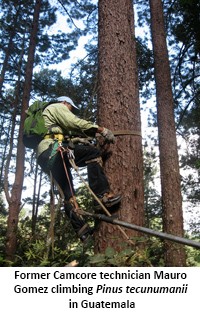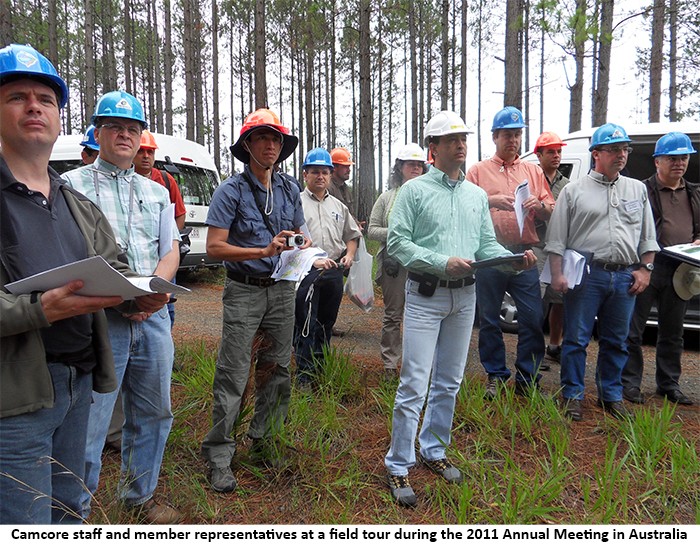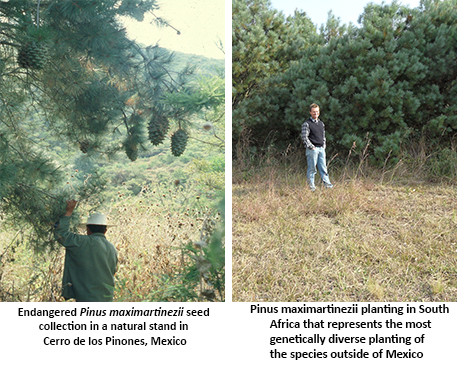Genetic Diversity Conservation Methodology
Camcore, with help f rom both active and honorary members, makes exploration trips into rugged and isolated areas of Central America and Mexico and various locations in Southeast Asia to find new populations of threatened trees. Once a forest population is identified as being threatened, we record the location is verified using a GPS (Global Positioning System). We then choose 20 to 50 seed-bearing trees from each population exhibiting good growth and form (whenever possible). Our goal is to collect seeds from enough trees in each population in the donor country to ensure that our sample represents the genetic diversity of the entire population.
rom both active and honorary members, makes exploration trips into rugged and isolated areas of Central America and Mexico and various locations in Southeast Asia to find new populations of threatened trees. Once a forest population is identified as being threatened, we record the location is verified using a GPS (Global Positioning System). We then choose 20 to 50 seed-bearing trees from each population exhibiting good growth and form (whenever possible). Our goal is to collect seeds from enough trees in each population in the donor country to ensure that our sample represents the genetic diversity of the entire population.
Each tree chosen for collection receives a special pedigree number that is recorded in our database. Individual family seedlots are then sent to Camcore members throughout the world to plant in field conservation banks and progeny trials using a standard test design.
Starting in the 1980s, gene conservation banks have been established around the world. The field conservation bank concept has now evolved into “Conservation Parks”. A conservation park is an area of 20 to 40 hectares of land that is placed on members’ land that is protected. The tract of land is divided into quarter-hectare plots, where 50 to 100 tree of each population are planted for their long-term protection. Individual Camcore members maintain these parks. The number of trees to be kept per population was decided based on its effective population size in natural stands (the estimated number of males contributing pollen and the number of females being pollinated). Currently, conservation parks are being established in South Africa and Colombia to protect Camcore material with more planned for other countries in the Camcore membership.
Although many of the original populations where we have collected seed have been lost, the genetic diversity has been archived in these conservation banks and conservation parks. Seeds from some of the original series of progeny trials and conservation banks outside of Central America and Mexico have been reintroduced into original donor countries. This helps the government organizations that originally participated in the Camcore collections to receive something back from the recipients. 


